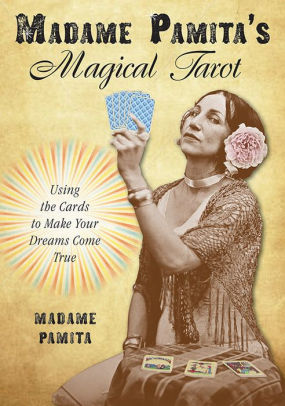Pamita takes a practical approach to using the tarot: she combines magical energy with physical action and positive intention to create the outcome hoped for. Her writing style is easy to read as she explains concepts from psychology mysticism and other complicated beliefs. She discusses multi-layers in a reading from the question that's asked to the cards that are turned up too the position the cards are in as well as the intuition of the person reading the card.
She provides six chapters explaining differently layers and topics to allow you to become familiar with tarot in general. Chapters 7 through 16 describe all the different tarot cards. For the minor arcana she gives a general description, key symbols to the card. As she introduces the different suits she gives a brief description of those suits to give an overview of what each suit means. In chapter 16 she talks about becoming familiar with the court cards or major arcana. She gives activities on how to become more intimate with the cards. She suggests playing with them in order to better understand them. Starting in chapter 17 she's discussing each of the major Arcana cards the format is the same as the minor arcana and it follows the traditional organization of the major arcana. She's using the rider Waite Smith deck as she feels that is the earliest and most complete and yet layered deck available.
As Pamita talks about getting to know your cards one of the things she encourages is both looking up the meaning of the card and trusting your own intuition. "There is no tarot Bible that has the one definitive answer regarding what a particular card means. (p. 8)" She recommends that you become familiar and gain understanding of each card in order to have a better reading. At the same time she says that the books and their definitions add a layer into the relationship with the cards in helping you define what each card means. She gives eight steps that you can do to become familiar with each card. In a way she's helping you write your own book of the meanings of the cards.
"Your thoughts create your beliefs and your beliefs are infinitely powerful. (p. 11)" she talks about how he thought is the beginning of all actions. These thoughts become more affirmations. If our thoughts are positive they can lead to powerful affirmations and Powerful results. Likewise if they are negative we end with negative results. She gets options for creating your own affirmations and how to use them. She says to choose one based on what you want to manifest. This will help you look forward to the end result that you want to accomplish. She talks about using our affirmations as a tool but then adding in the layer of magic in order to bend reality to our well. This is meant to help us manifest what were saying affirmations on. She talks about things like placing it on an altar or carrying the card with you. She gives several of these options to do in order to help you manifest what you're saying affirmations about.
As well as separating out by major and minor arcana, she takes the minor arcana and divides them between the numbered cards which she calls pip and the court cards. She goes as far as helping the reader to understand Roman numerals and how to read them. She gets a chart with the regular numbers we write, Roman numerals, and then how we would interpret the Roman numeral. In looking at the different suits she seems to have a good grasp of the meanings of each suit and how they affect and work within the tarot reading. For the cards she describes the cards and she has a good grasp of those meetings as well. Readers of this book are not going to find any odd strange different meanings. She describes each of them in a familiar way so that the beginner to the advanced can use the book and the meaning she's giving. She goes through all four suits for the number cards first. Then she discusses the court cards. She says that the court cards have a different energy than the number cards. In discussing the court cards she gives a general meaning for each of them regardless of suit. King equals father, Queen equals Mother, and so on. Then she discusses that even though the genders are specific for the cards, it doesn't mean the card represents either male or female. It's the overall energy that the card represents. She treats the court cards as family cards. She gives an astrological association. As well as a general outline of what these people are like and how they typically behave.
"While the minor Arcana pips represents circumstances in our lives that are more mundane and the court cards represent people or personalities, the 22 majors represent big powerful and even more esoteric themes." The statement gives an overview of how she treats each group of cards. It gives another layer of how the cards are represented. Well she doesn't give any tarot spreads, she does recommend that you start your readings with 1 card spreads which are meant to answer a specific question. She talks about moving on to the 3 card spread past present and future or even the time cards Celtic cross. She recommends that the reader look up different spreads and learn about them.
With the name and the cover I expected a somewhat kitschy review of tarot. What I found was insightful deep and educated. This is a book that will be kept in my library.
~review by Eileen Troemel
Author: Madame Pamita
Red Wheel Weiser 2018
p. 250

